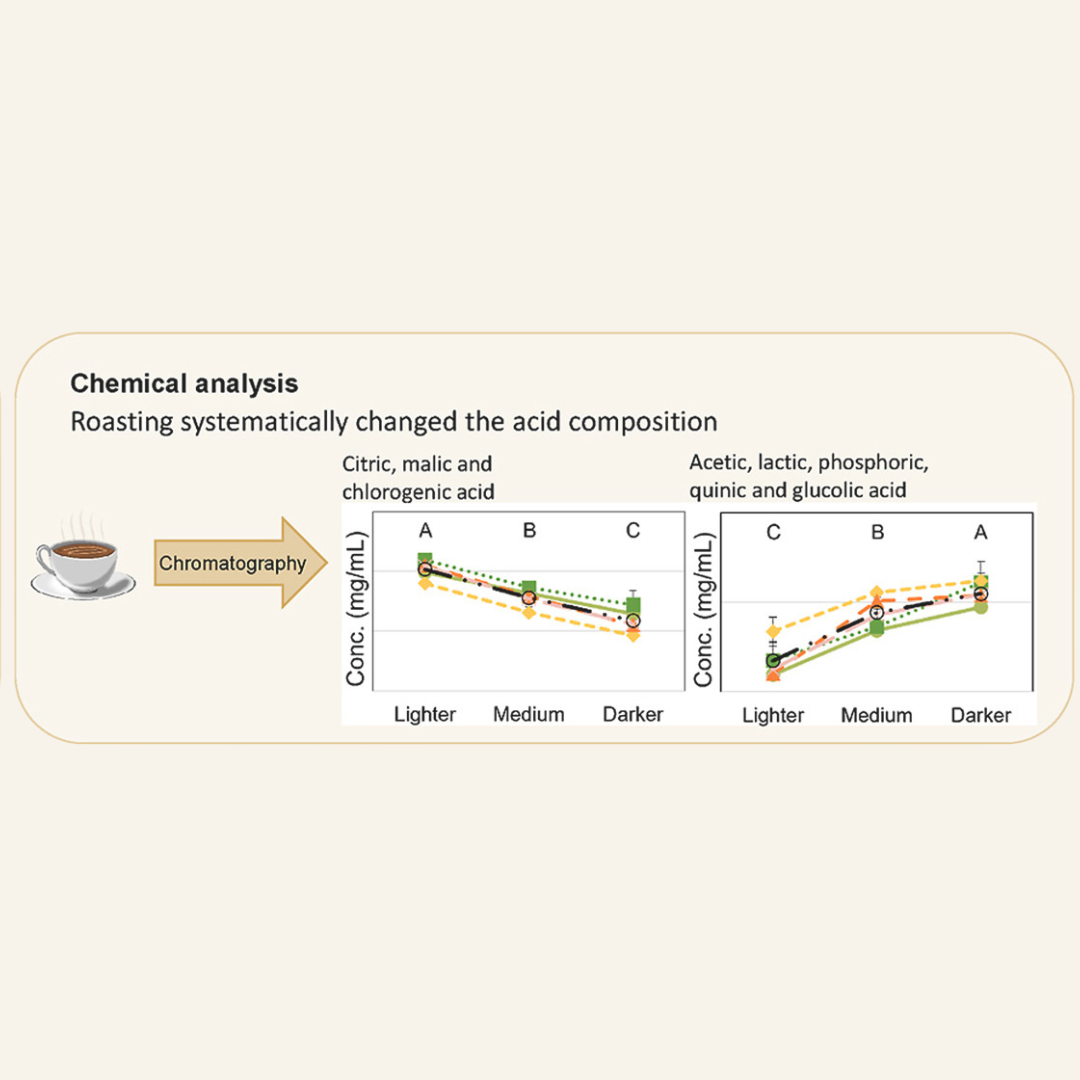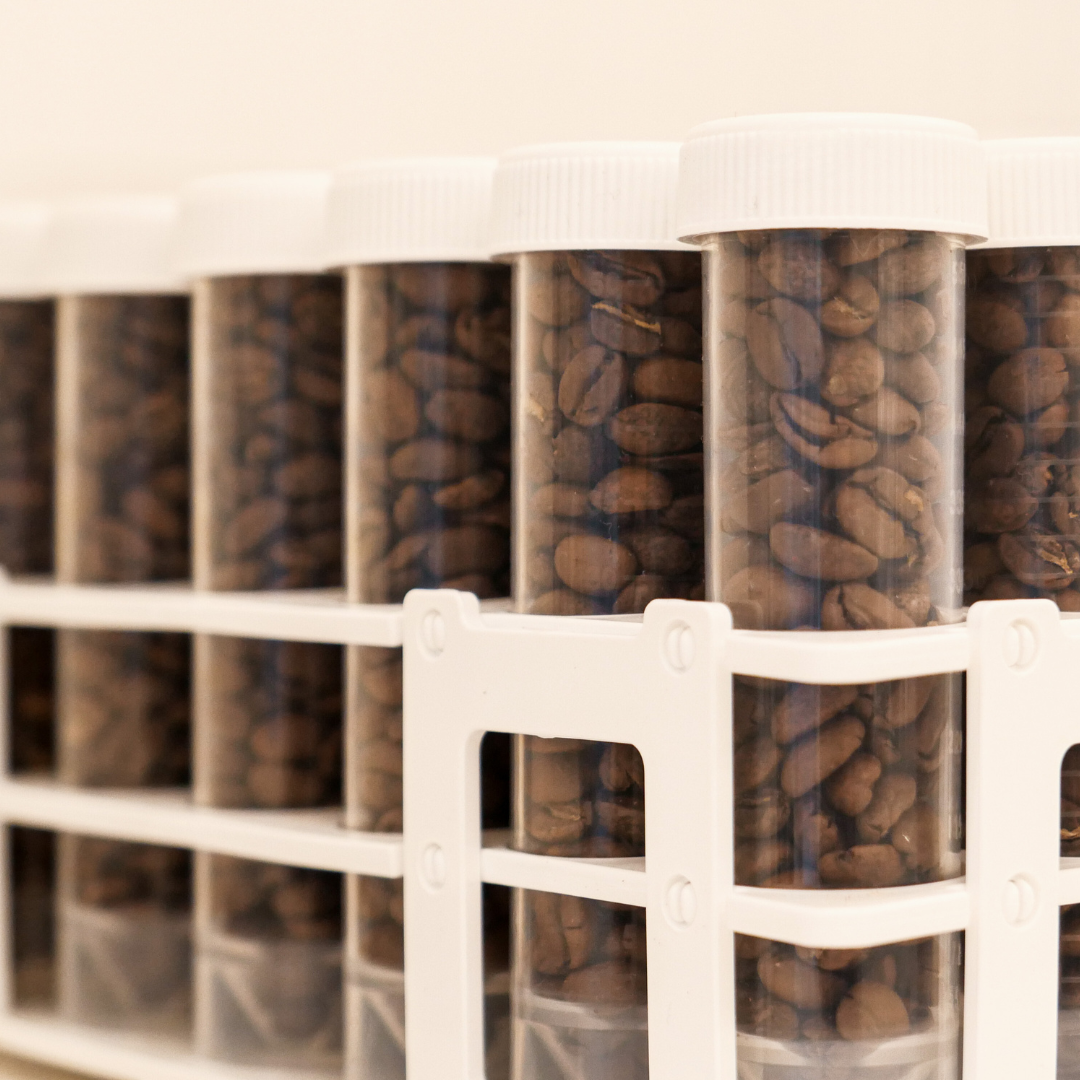Our loyal customer had a question about Chlorogenic Acid in coffee. He was wondering if organic coffee is a better choice for chlorogenic acid than non-organic or small & high altitude farms.
My answer is to choose light roast coffees (whether organic or not) to maximize the benefits of chlorogenic acids in coffee. I couldn't find any information about whether organic coffee contains a higher level of chlorogenic acids than non-organic coffee. From the research I've read, all coffee contains different amounts of chlorogenic acids, but the levels decrease during roasting. For example, when green coffee beans contain 100% chlorogenic acids, light roast coffee would have 20-30%, medium roast coffee would have 10-20%, and dark roast coffee would have only 1-5% left.
Why are Chlorogenic Acids important?
Antioxidants play a critical role in maintaining good health as they help to inhibit the oxidation caused by free radicals in our bodies. Although oxygen is essential for us to live, it can also cause damage to our cells and the genetic material inside them when it is part of free radical compounds. This process can ultimately lead to severe health conditions like cancer, high blood pressure, and systemic inflammation. Therefore, including more antioxidants in our diet, such as Chlorogenic acids, is crucial. CGAs are present in various fruits and vegetables, including apples, pears, carrots, tomatoes, and sweet potatoes. However, they are most abundant in beverages such as tea and coffee!
Chlorogenic acids in coffee have numerous health and wellness benefits. They work by combating free radicals and slowing down the oxidation process, which can help prevent conditions such as cancer, Alzheimer's, and Parkinson's disease. Additionally, CGAs have anti-inflammatory properties that can help reduce inflammation and prevent chronic diseases in the long run. CGAs can also regulate glucose levels, which can be beneficial for weight loss and maintenance while reducing the risk of diabetes. A study conducted in 2006 showed that CGAs significantly lower blood pressure during the ingestion period.
The composition of acids in green coffee beans includes chlorogenic, quinic, citric, and malic acid. Although the amounts of acids vary depending on species, cultivar, growth altitude, and processing method, coffee beans' acid composition changes significantly during roasting. Chlorogenic, citric, and malic acids degrade, while quinic acid increases due to the breakdown of chlorogenic acid. Acetic, formic, lactic, and glycolic acids are also formed due to the thermal degradation of simple sugars present in the beans, such as sucrose, glucose, and fructose. As a result, the primary acids in roasted coffee include chlorogenic, quinic, citric, malic, acetic, formic, lactic, glycolic, and phosphoric acid. Tartaric acid is occasionally found as well.
The decrease in total acids is mainly attributed to the expected decrease in chlorogenic acid concentration due to thermal degradation during roasting. The decrease in chlorogenic acid concentration is approximately 0.4 mg/mL for all coffees when changing the roast level from lighter to medium. A further 0.4 mg/mL decrease is observed from medium to darker roasts.
Chlorogenic Acids in Coffee
Posted by Nate Lee on



